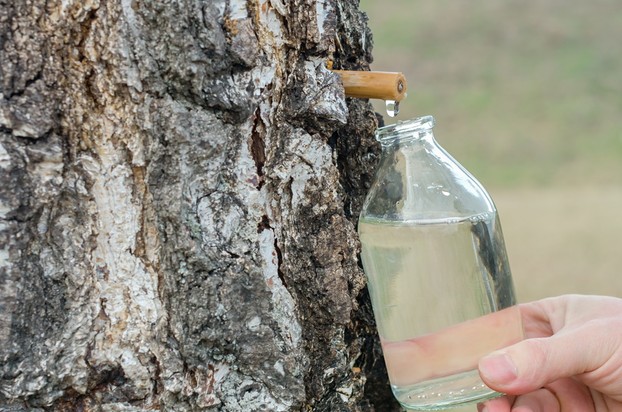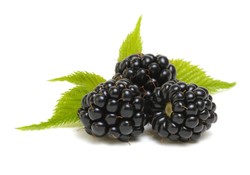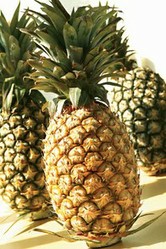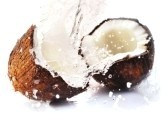One of the best wines that I ever made was a blackberry and elderberry mixture. It was in Fall, when I went a-foraging in the hedgerows and in the scrubby woodland near to the Bridgewater Canal, which runs near to my house. The children and I had found an old elder tree in what they called our secret place, and we foraged its berries, some being used in desserts, but others for wine making. I have made elderberry wine on its own, but in later years I focused mainly on mixing it with other fruits. In fact elderberry is quite tarty and so is more suitably mixed with sweeter fruits and needs to be sweetened. [Some people that the tannin in it has a mildly irritating effect on the stomach when it is taken in any quantity, but this seems matter of individual genetics.]
Blackberries mix well with any fruit, and so I have made a lovely wine out of blackberry and apple juice, some having come from my late lamented old Bramley Apple , which used to provide a rich crop until it had to be felled because of canker, but I have also used crab apples foraged in scrubby neglected woodland patches. Pear juice also will go well with any other fruit, but you have to leave the newly picked pears some time to soften after picking. The great advantage of blackberry is that Britain is rife with it, and so unless a zealous local council decides to tidy up the hedges there are plenty of blackberries in late August and early September, depending upon the area.I pick a few lovely, succulent ones when I am going out of the allotment, for the fence has plenty of them lining it. Do not, though, pick the shiny ones, for they are yet not fully ripe. A blackberry is ripe when its shine has faded into a dull blackish purple.
The recipe is similar to the one given above for birch, but you need to pulp the blackberries, a juicer will suffice, but they can be boiled to get them to break down. Strain the juice into a demijon and add two pounds of sugar,yeast and yeast nutrient. I use a red wine yeast,though a general purpose yeast will suffice.
There are other wines, all of which are made in the same way as blackberry is. You can also make elderflower wine, a brew of Spring, which involves collecting a gallon of elderflowers and soaking them for a few days to extract their flavour, then brewing the wine as elderberry is brewed, though a white wine yeast is preferable. Some berries, such as hawthorn, are not suitable for brewing as they have very little flesh and juice. Bilberry, Britain's close relative of the blueberry is made in the same way as elderberry and blackberry are, but this small ground covering shrub requires much effort to pick sufficient for a brew.











 Pilgrimage. A review19 days ago
Pilgrimage. A review19 days ago
 Leo the Fourteenthon 05/09/2025
Leo the Fourteenthon 05/09/2025
 The Melsonby Hoardon 03/25/2025
The Melsonby Hoardon 03/25/2025



Comments
A large jar with a hole for a riubber stopper with an airlock.
Thank you!
The Wine Making Guides sites gives as instructions
Peel, chop and put in pan of boiling water onions and potatoes
Simmer 20 minutes
Strain onion and potato water into winemaking fermentation vessel
Top with boiling water onion wine liquor to make 8 pints (1 gallon)
Roughly chop raisins
Add all other ingredients, except for winemaking yeast
Stir to dissolve all sugar into onion mixture
Add activated wine yeast when water cooled to room temperature
Stir every morning, every evening for four days
Strain
Pour fermenting onion wine "must" into sterilized demijohn, with airlock
Rack onion wine for the first time and three weeks, then twice more and three-monthly intervals
Bottle at 12 months, by which time wine clarity should be good and fermentation completely ceased
Onion wine benefits from standing for 6, 6-plus months before drinking.
What is an airlocked, sterilized demijohn?
How difficult or easy, how doable or non-doable might the above procedures sound -- from your prior wine-making experience -- to you?
Yeast nutrient is a booster to get the yeast started. Camden tablets are a sterilized for the Demijon to be used prior to filling. I kept my children away from the Camden tablets by calling them very bad tummy ache powder.
Wine Making Guides site identifies as ingredients
1/2 lb / 225 grams onions
1/2 lb / 225 grams potatoes
1 lb / 450 grams raisins
2 1/2 lbs / 1,100 grams granulated sugar
1 teaspoon acid blend
Wine yeast
1 teaspoon yeast nutrient / energiser
8 pints / 1 gallon water
1 campden tablet.
What might your wine-making experience indicate about the above ingredients?
Would you know what "acid blend" and "yeast nutrient/energiser" and "campden tablet" might be?
That is interesting, and it is something about which I had never heard. Thanks.
Onion wine appears to be quite appreciated among cooking and table wine-admiring Unitedstatesians!
It can be made with potatoes and raisins.
It may be described as somewhat sweet in its cooking- and table-wine appearances. Somewhat surprising, no?
That is a new one, Derdriu. I had never heard of onionnwine until now. Thanks.
The north, the south and the west lawns naturally host wild onions here.
Online sources identify wild onions as fermentable into wild-onion wine.
Might you ever have made your own onion wine or tasted it?
I have no experience of lanternflies, as my home is in the North West, but in general growers have pests to deal with.
The Environmental Protection Agency's Integrated Pest Management Program (EPA IPM) conducts an arborist-related webinar series on such topics as spotted lanternfly (Lycorma delicatula) invasions and management.
Their webinar yesterday indicated that spotted lanternflies (SLF) offend California vineyardists specifically and wine-making berry- and grape-growers generally. The United States thus far relies on bifenthrin, dinotefuran and imidicloprid treatments since natural, organic treatments render near-nothing results. Research shows fungal biopesticides not ruining any winemaking-friendly fungi but also not ruining any SLF populations, be they nymph or adult stages, either.
Business and home winemakers stress over ultimate impacts on berry, grape and wine quality.
Online sources talk about spotted lanternflies in east and southeast England, whose warm-summer climate ushers in SLF to their favorite Tree-of-Heaven (Ailanthus altissima) hosts.
Would there be similar concerns on your, eastern side of the (Atlantic) pond over controls, environmental residue and product quality?